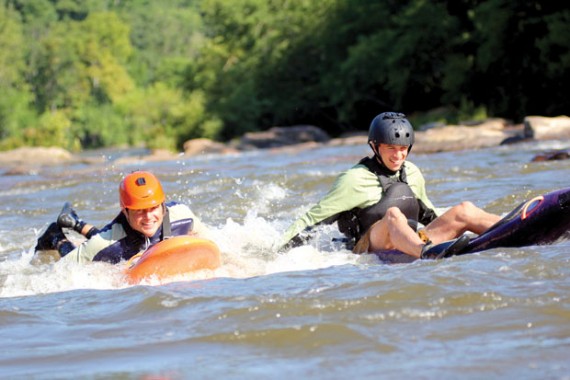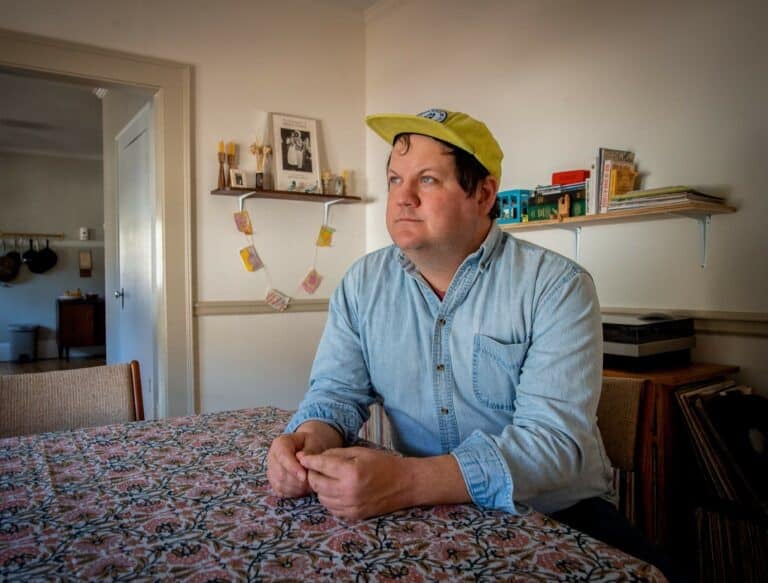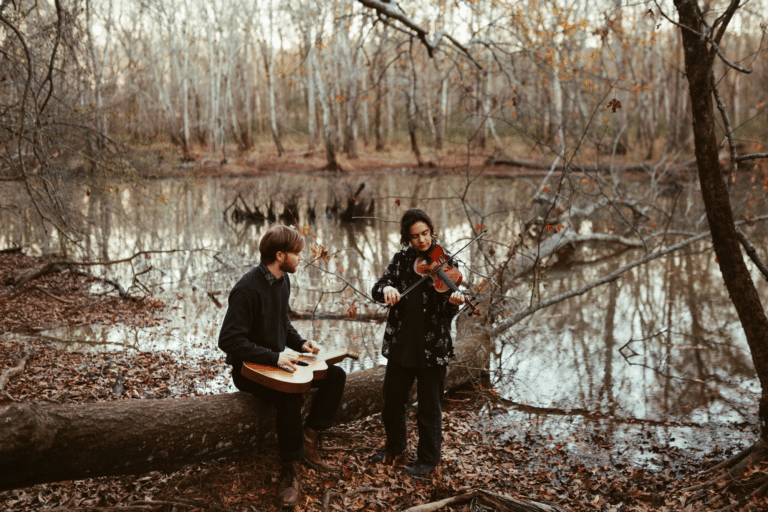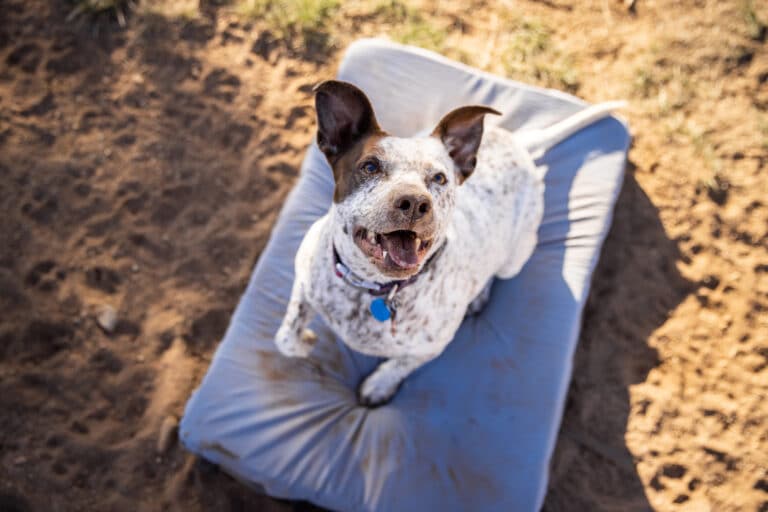Adam Masters gets a face full of fun riding his bellyak, a body boat for whitewater and flatwater adventure.
Body boating is the next big evolution in river adventure.
What’s the most memorable and exciting part of whitewater rafting? Falling in. It’s what we tell stories about, what gets photographed, what gets our heart thumping. It’s why spectators set up lawn chairs beside Sweets or Nanny Falls. It’s quite simple: we want to get wet. We secretly—and safely—want to end up in the drink.
We may not necessarily want to fall out in a thundering class-V rapid, but there is an instinctive draw to the river—not just floating on top of it in a giant inflatable raft or plastic kayak—but being drenched in it, feeling its power, being a part of it.
That instinctive longing for immersion in the river is behind body boating, a new river sport that places you at face level with the fearsome water. Body boating pioneer Adam Masters has designed the bellyak to grow the sport.
The bellyak is basically an eight-foot plastic board, indented with a body cavity, that is ridden horizontally, belly-down. The body boater holds on to grips on the front of the board and uses hand paddles to maneuver through the water.
“You’re totally one with the water,” says Masters. “It’s like flying through the river.”
I had to try it.
Last month, I met Masters to body boat some easy rapids on the French Broad River. I strapped on some webbed gloves and hand-paddled out into the current. It was like swimming with a board beneath me. I felt fast, fluid, and free on the river. I could glide and guide with my arms rather than with a clunky paddle.
Unlike kayaking, there were no straps or skirts to confine me. There was no fear of being trapped underwater in an upside down kayak. I didn’t have to worry about emptying the water out of my waterlogged canoe. When I flipped on the bellyak, I just climbed back on. Since it’s at water level, it’s easy to get on and off. And unlike riverboarding, my legs and lower torso didn’t get banged to hell.
I got a face full of water plunging down class-II ledges, but the bellyak’s hull still floated me over and through the water like a traditional boat and allowed quick direction changes. I could literally reach out and grab an eddy with my arms. I could quickly pull myself behind a rock in the middle of the river or peel out of an eddy along the shore.
“Anyone can do this,” Masters explains. “It requires no special skills. It’s a high-reward, low-risk way to explore rivers,” says Masters.
Best of all, the bellyak completely changed my perspective of the river. A relatively tame stretch of the French Broad suddenly became an exciting new challenge. Small waves became surf spots; mini-rapids became more riveting, close-up encounters with the water. Surfing a small hole on the French Broad was an in-your-face thrill—without the worry of flipping your boat, losing your paddle, or getting stuck underwater.
A wet exit in a kayak or canoe is an ordeal. But on the bellyak, it was part of the fun. I wiped out several times, washed downstream, and hopped back on the board. It took less than ten seconds.
At a slim 30 pounds, the bellyak weighs less than most kayaks and is much easier to carry, making for an easy portage back up to the top of the rapids for another run. It’s cheaper than a kayak, too, retailing at $795.
Adam Masters has devoted the past five years of his life to the bellyak, chopping up his old kayaks to hone the design of prototypes. Boat innovation is in his blood. His father, Bill Masters, founded Perception Kayaks in 1975 and grew it into one of the most successful companies in the outdoor industry.
Designed and hand-built in Asheville, the bellyak is ready to launch a new wave of watersport. Just as stand-up paddleboarding has attracted new enthusiasts to the water, bellyaking provies an intense and intimate river adventure accessible to anyone.
Says Masters, “It’s a more simple, pure, and exciting way to experience the river.”
For another great August paddling article, check out The Waterman by Chris Gragtmans








